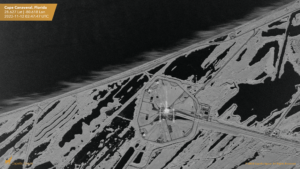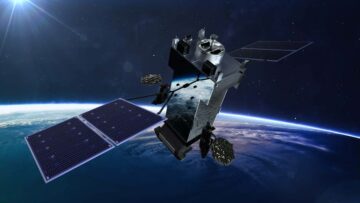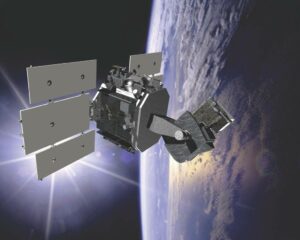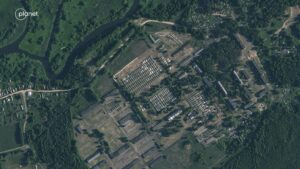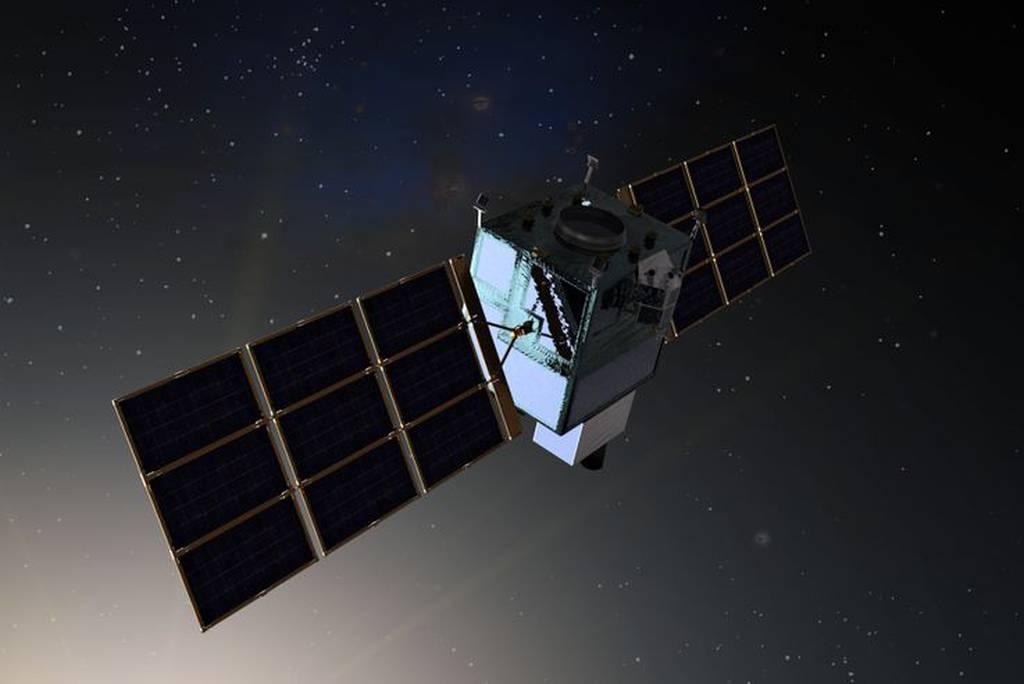
WASHINGTON — Northrop Grumman said its design for next-generation missile warning satellites passed a key Space Force review.
The company is under contract to build two Next-Generation Overhead Persistent Infrared Polar satellites that will provide coverage of the northern hemisphere, the most difficult area to observe from space. The Space Force plans to launch the first satellite in 2028.
“Northrop Grumman is on an accelerated path to delivering an early-warning missile system capable of surviving attacks from space, ground or cyber elements,” Alex Fax, Northrop’s vice president for the polar program, said in a May 24 statement. “NGP satellites will maintain a direct line of communication back to the continental United States, limiting dependency on overseas ground station sites.”
The milestone, called a preliminary design review, keeps the company on track for a possible production contract next spring or summer, according to a company spokesperson. The Space Force awarded the company $2.37 billion development contract in 2020.
Northrop’s sensor payload for the polar satellites is designed to detect infrared heat signatures from incoming missiles. They will also carry a communications payload that allows them to send tracking data to operators on the ground.
The payloads will fly on the company’s Eagle-3 spacecraft, which is designed for complex, strategic payloads like missile warning sensors.
The NGP effort is part of the Space Force’s broader Next-Gen Overhead Infrared program, which includes two Lockheed Martin-built satellites destined for geosynchronous orbit, about 22,000 miles above Earth’s surface. The service had planned to build and launch three GEO spacecraft, but it cut one satellite from the mix in its fiscal 2024 budget.
The service is seeking $1 billion for the polar segment of the program in fiscal 2024 and expects to need another $2.2 billion between FY25 and FY28, which the first satellite launches. That funding would support the program’s critical design review and early preparation for production, assembly and test.
Courtney Albon este reporterul C4ISRNET în domeniul spațiului și tehnologiei emergente. Ea a acoperit armata SUA din 2012, cu accent pe Forțele Aeriene și Spațiale. Ea a raportat despre unele dintre cele mai importante provocări legate de achiziții, buget și politici ale Departamentului Apărării.
- Distribuție de conținut bazat pe SEO și PR. Amplifică-te astăzi.
- PlatoAiStream. Web3 Data Intelligence. Cunoștințe amplificate. Accesați Aici.
- Mintând viitorul cu Adryenn Ashley. Accesați Aici.
- Cumpărați și vindeți acțiuni în companii PRE-IPO cu PREIPO®. Accesați Aici.
- Sursa: https://www.defensenews.com/battlefield-tech/space/2023/05/24/northrop-missile-warning-satellites-pass-early-design-review/
- :are
- :este
- $ 1 de miliarde de
- 000
- 10
- 2012
- 2024
- 2028
- 22
- 24
- 70
- a
- Despre Noi
- mai sus
- accelerat
- Conform
- achiziție
- AIR
- Air Force
- alex
- permite
- de asemenea
- an
- și
- O alta
- ZONĂ
- Asamblare
- Atacuri
- acordate
- înapoi
- între
- Miliard
- mai larg
- buget
- construi
- dar
- denumit
- capabil
- transporta
- provocări
- Comunicare
- Comunicații
- companie
- Compania
- complex
- continental
- contract
- acoperire
- acoperit
- critic
- Cyber
- de date
- Apărare
- livrarea
- Dependenţă
- Amenajări
- proiectat
- Dezvoltare
- dificil
- direcționa
- Devreme
- efort
- element
- șmirghel
- Tehnologie emergentă
- Eter (ETH)
- se așteaptă
- fax
- First
- Fiscal
- Concentra
- Pentru
- Forţarea
- din
- de finanțare
- Teren
- HAD
- HTTPS
- imagini
- in
- include
- Intrare
- IT
- ESTE
- jpg
- Cheie
- lansa
- lansează
- Linie
- menține
- Mai..
- bornă
- Militar
- rachete
- cele mai multe
- Nevoie
- următor
- generație următoare
- observa
- of
- on
- ONE
- Operatorii
- or
- Orbită
- de peste mări
- parte
- trece
- Trecut
- cale
- planificat
- Planurile
- Plato
- Informații despre date Platon
- PlatoData
- polar
- Politica
- posibil
- preşedinte
- producere
- Program
- furniza
- Raportat
- reporter
- revizuiască
- s
- Said
- satelit
- sateliți
- caută
- segment
- trimite
- serviciu
- ea
- Semnături
- semnificativ
- întrucât
- Centre de cercetare
- unele
- Spaţiu
- Forța spațială
- nave spaţiale
- Purtatorul de cuvant al
- primăvară
- Declarație
- Statele
- staţie
- Strategic
- de vară
- a sustine
- Suprafață
- sistem
- Tehnologia
- test
- acea
- Lor
- ei
- trei
- la
- urmări
- Urmărire
- Două
- ne
- în
- Unit
- Statele Unite
- Vicepreședinte
- de avertizare
- care
- voi
- cu
- ar
- zephyrnet

